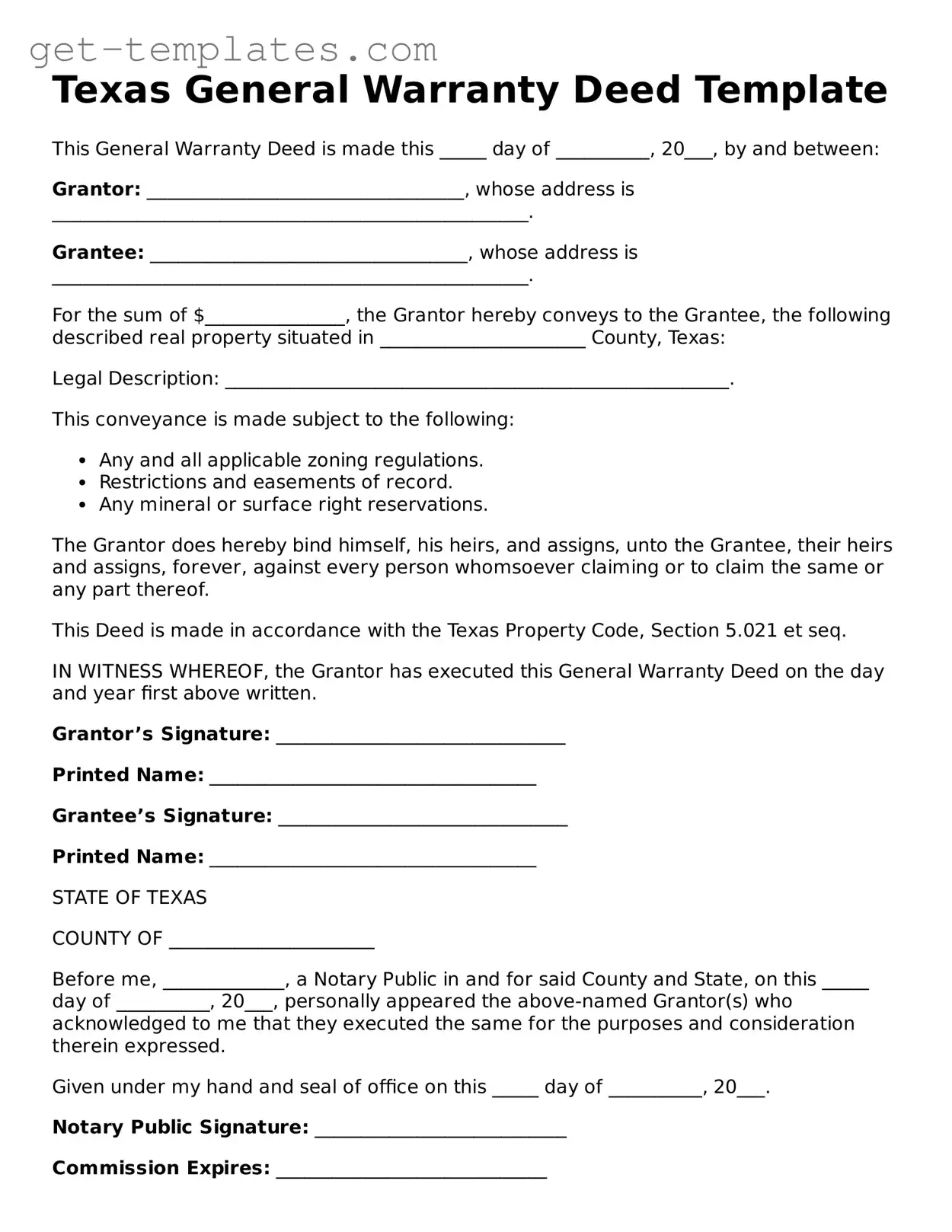Texas General Warranty Deed Template
This General Warranty Deed is made this _____ day of __________, 20___, by and between:
Grantor: __________________________________, whose address is ___________________________________________________.
Grantee: __________________________________, whose address is ___________________________________________________.
For the sum of $_______________, the Grantor hereby conveys to the Grantee, the following described real property situated in ______________________ County, Texas:
Legal Description: ______________________________________________________.
This conveyance is made subject to the following:
- Any and all applicable zoning regulations.
- Restrictions and easements of record.
- Any mineral or surface right reservations.
The Grantor does hereby bind himself, his heirs, and assigns, unto the Grantee, their heirs and assigns, forever, against every person whomsoever claiming or to claim the same or any part thereof.
This Deed is made in accordance with the Texas Property Code, Section 5.021 et seq.
IN WITNESS WHEREOF, the Grantor has executed this General Warranty Deed on the day and year first above written.
Grantor’s Signature: _______________________________
Printed Name: ___________________________________
Grantee’s Signature: _______________________________
Printed Name: ___________________________________
STATE OF TEXAS
COUNTY OF ______________________
Before me, _____________, a Notary Public in and for said County and State, on this _____ day of __________, 20___, personally appeared the above-named Grantor(s) who acknowledged to me that they executed the same for the purposes and consideration therein expressed.
Given under my hand and seal of office on this _____ day of __________, 20___.
Notary Public Signature: ___________________________
Commission Expires: _____________________________
